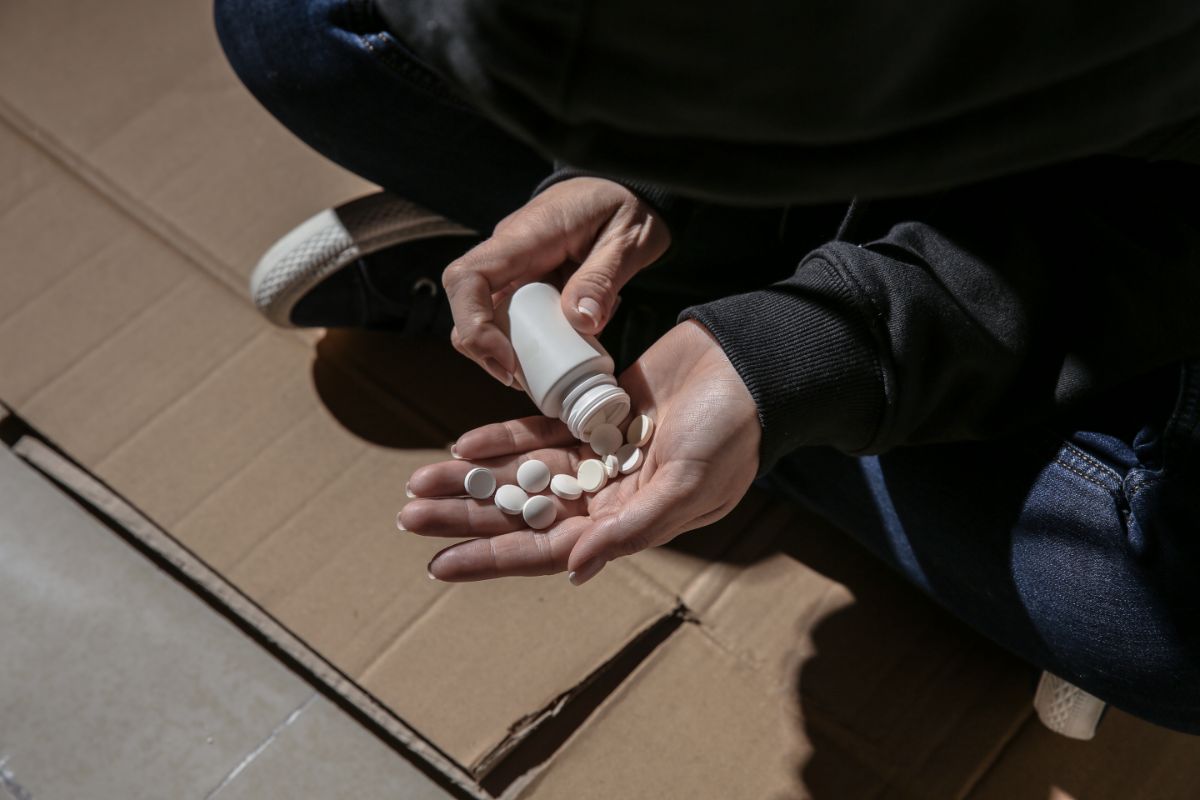
3 Ways to Recognize a Panic Attack Early (What to Do + More)
- Panic Disorder
- June 6,2025
- BY Beachside Teen Staff
- 0 Comments
A panic attack often builds subtly before overwhelming you. Early signs of a panic attack include body tension, sudden feelings of fear, or racing thoughts. Learning how to recognize a panic attack early can reduce the severity of the attack by using coping skills, such as grounding techniques, mindfulness, and stress reduction.
Beachside Teen Treatment Center provides anxiety treatment for teens in Los Angeles, California. Call us today at (888)254-0916 to get started.
Table of Contents
What Is a Panic Attack?
A panic attack is the defining symptom of a panic disorder—a type of anxiety disorder.
2.3% of Adolescents Experience Panic Disorder
According to the National Institute of Mental Health (NIMH), “An estimated 2.3% of adolescents [age 13-18] had panic disorder, and 2.3% had severe impairment.”
Panic disorders are characterized by repeated and often unexpected episodes of overwhelming fear—these episodes are called “panic attacks.” Panic attacks can cause physical and emotional symptoms so intense that you feel “out of control.” Oftentimes, people feel like they are having a heart attack or perhaps even dying.
Basically, when you have a panic attack, your body and mind think you are in danger, but you aren’t. Your natural response to threats—called the “flight or fight” response—kicks in when you are physically threatened and need to prepare to defend yourself or flee the scene.
But, when you have a panic attack, there is no threat to run from or to fight—except in the fearful and worrisome thoughts you experience. Thus, your body prepares you to physically respond to a threat, but, since you aren’t in any immediate danger, the built-up energy expends itself in distressing and overwhelming symptoms.
Recommended: Top 5 Causes of Panic Attacks in Teens
What Are the Symptoms of a Panic Attack?
Recognizing panic attacks in teens includes looking for the following symptoms:
- Elevated heart rate
- Increased blood pressure
- Upset stomach or nausea
- Chest and abdominal pain
- Dizziness or feeling light-headed
- Difficulty breathing
- Hyperventilating
- Numbness and tingling in extremities
- Feeling detached from reality
- Difficulty concentrating
- Racing thoughts
- Chills and tremors
- Excessive sweating
Panic attacks can last a few minutes to an hour. Afterward, you may feel drained and fatigued. This is because you expend a lot of physical and mental energy during the attack.
Why Early Recognition Matters for Teens
Recognizing the early signs of a panic attack helps teens reduce the severity of their panic attacks—sometimes preventing one from occurring altogether.
While panic attacks feel sudden, most have predictable patterns if you know what to look for. Understanding the early warning signs can help your teen respond to their panic attack early. That way they can take proactive steps to ground themselves before symptoms escalate.
3 Ways to Recognize a Panic Attack Before It Happens
Knowing how to recognize a panic attack early is crucial to treating panic disorders.
Panic attacks involve a number of symptoms that begin prior to the onset of a full panic attack. These symptoms include physical, emotional, and cognitive signs.
The following are early warning signs of a panic attack you need to look out for:
#1. Tune Into Physical Shifts
Before a panic attack, you’ll notice some changes in your physical state, such as:
- Tightening chest, rapid breathing, lightheadedness—even if mild at first
- Increased muscle tension
- Headaches or other bodily pains
- Feeling detached or like you are outside of your own body
#2. Notice Emotional Signals
Emotional signals can be a strong predictor of an upcoming panic attack. Oftentimes, emotional distress can build up to a state of panic.
Be aware of emotional signals, like the following:
- Sudden unexplained fear, dread, or detachment
- Feeling like “something bad is about to happen” without a clear reason
- Feelings of worry or anxiety in anticipation of an event
#3. Pay Attention to Thought Patterns
Cognitive signs of panic attacks include certain types of thought patterns. These thought patterns are often related to anxiety, fears, and worries. Panic sets in when these thoughts seem uncontrollable and overwhelm you.
The following are thought patterns that can help you recognize a panic attack early:
- Racing thoughts
- Catastrophizing (expecting the worst-case scenario)
- Feeling trapped or desperate to leave a situation
For More Tips: How Do You Deal with Anxiety and Panic Attacks?
What to Do After Recognizing the Early Signs
Understanding how to respond to a panic attack early is a vital part of thriving with a panic disorder diagnosis.
When you notice early signs of a panic attack, you can start to use panic attack coping strategies to get out ahead of the attack. Remember to practice coping strategies when you’re doing well. That way, you’ll know what to do in the moment when things start to feel overwhelming.
In addition, practicing coping strategies even when you aren’t having a panic attack can help to reduce stress and lower the severity or occurrences of future panic attacks.
By incorporating panic attack coping strategies into your daily life, you can gain self-awareness of anxiety and panic. That way, you can lower your stress levels throughout the day. This will help you remain in a calm state to manage situations, events, or people who trigger your anxiety.
The following are coping strategies for panic attacks that you can use to prevent or reduce the severity of a panic attack:
Ground Yourself Quickly
Grounding exercises help you stay focused “in the moment.” Hence, these exercises “ground” you to keep your mind from spinning out of control.
Oftentimes, when you try to stop fearful thoughts, you only make them stronger. Grounding exercises give you something else to focus on—and help you regain a sense of control.
The following are examples of grounding exercises:
- Breathing exercises: Practicing breathing exercises like mindful breathing can reduce anxiety and panic. For example, taking 10 deep breaths when you feel stressed or cycling through 5 seconds each of breathing in, holding your breath, breathing out, and holding again for 5 seconds can help.
- 5-4-3-2-1 grounding method: This grounding technique helps you focus on the five senses: identify 5 things you can see, 4 things you can touch, 3 things you can hear, 2 things you can smell, and 1 thing you can taste.
- Sipping cold water: Staying hydrated can help to ease the oncoming symptoms of a panic attack. In addition, by holding a glass of cold water, you can have another sensation to focus on while also lowering your body temperature.
Change Your Environment (If Possible)
Simply changing where you are can help to reduce feelings of panic. For instance, step outside for a walk or find a quieter spot to be—especially if you are in an overly stimulating or loud environment.
If you are unable to leave where you are, try to physically shift positions to disrupt the attack’s momentum. This can be a way of checking in on your bodily posture, which can distract you from overthinking.
Talk to a Support Person
You can also get ahead of a panic attack by talking to a supportive person. For instance, reaching out to a teacher, coach, parent, counselor, or even texting a friend can break the spiral. If this person knows you well and understands your symptoms, they can remind you of additional coping skills that have helped you in the past.
Furthermore, just talking to someone else about anything can help you stay in the moment and keep your thoughts from racing out of control.
Why Recognizing Early Signs Makes a Difference
Recognizing early signs of panic attacks in teens makes a huge difference for the following reasons:
- Reduces attack intensity
- Builds confidence in managing emotions
- Helps teens seek help earlier if needed
If your teen struggles with panic disorder, Beachside Teen Treatment Center can help. Not only do we offer therapy and other evidence-based mental health interventions, we also offer therapeutic education so your teen doesn’t fall behind at school during treatment.
Find Treatment for Panic Disorders in Los Angeles, CA
Panic disorders are a type of anxiety disorder that includes panic attacks among the other common symptoms of anxiety. These disorders can be frightening for teens when they experience panic attacks—especially for the first time before getting a diagnosis. Understanding how to recognize a panic attack early is one of the most helpful ways to reduce your teen’s symptoms.
If your teen is struggling with a panic disorder, we’re here to help. Contact Beachside Teen Treatment Center in Los Angeles, California, today.




